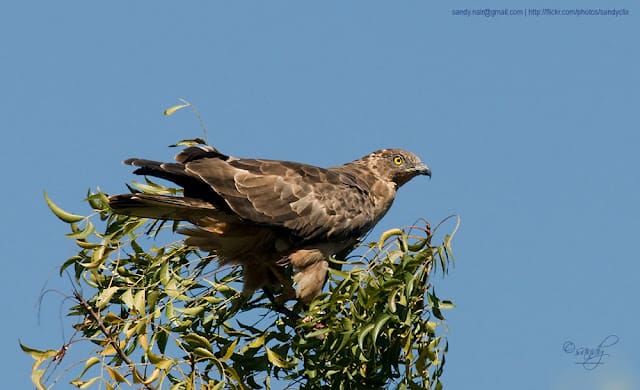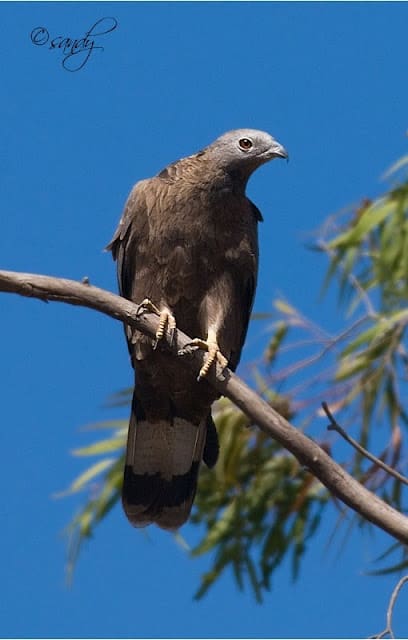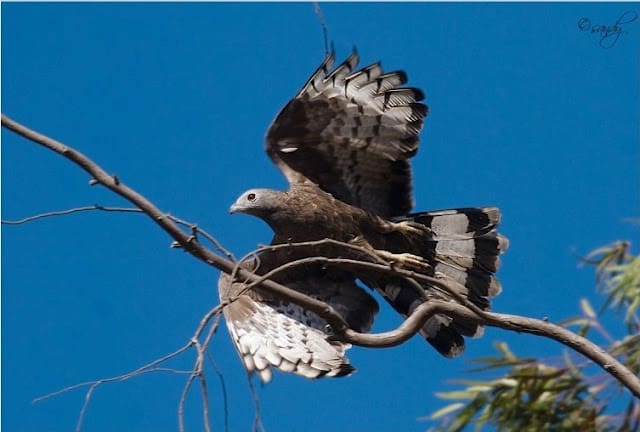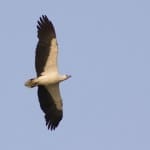Until five years ago, every bird that soared was an “eagle”. I had just started birding and I don’t know how many times until then I had let pass this intriguing bird as an eagle. And by “eagle” I would have meant the ubiquitous Black Kite or Pariah Kite (Milvus migrans).
 |
| The high flying male. Note the barred undersides of the wings and tail, and the small head and slender neck |
I have spotted the Oriental Honey Buzzard (Pernis ptilorhynchus) in a variety of habitats — flying high over scrublands, in eucalyptus plantations, over my office campus, and in dense forests. One of my friends was lucky to see one perched on his compound wall.
Its name, of course, comes from its habit of pursuing its favourite diet, the larvae of honey bees and wasps, which it catches by attacking honeycombs. In my mother-tongue, Malayalam, the bird is known as thenkothichi — literally, she who is greedy for honey. Evidently, those who named it mistook (and romanticised) the raids on the honeycombs as attempts to find honey.
 |
| Female perched. The yellow eye and the dark brown plumage are distinctive |
The best way to identify the bird is by the shape of its head. Unlike the rounded and large head of a kite and the flat head of an eagle, the honey buzzard’s head is slender — more or less similar to a pigeon’s — with a thin neck. In flight, the honey buzzard’s neck and head stick out at right angles to the outspread wings, and in most cases the six primaries (flight feathers at the edges of the wings) are fanned out like open fingers.
 |
| Male perched. Note the red eye, pigeon-like head and banded tail |
The male has red eyes and a rather featureless blue-grey head, while the female has yellow eyes and brown plumage. Apart from feeding on the larvae of bees and wasps, the Oriental Honey Buzzard also preys on other insects and the commonly seen garden lizards (Calotes versicolor).
 |
| Ok, you have seen enough! |
Honey buzzards need large trees both for nesting as well as to host honeycombs, their primary source of food. The rapid advent of urbanisation, which affects almost every species of bird, has also led to a marked decline in the habitat available to the honey buzzard.
- Costa Rica Diaries – Parting Gifts - May 5, 2024
- Costa Rica Day 6 – Resplendent Quetzal: Part Bird, Part God and Full-Time Economy Driver - April 17, 2024
- Costa Rica Day 5 – Toucan Trees and Wild Dreams Coming True - March 22, 2024

